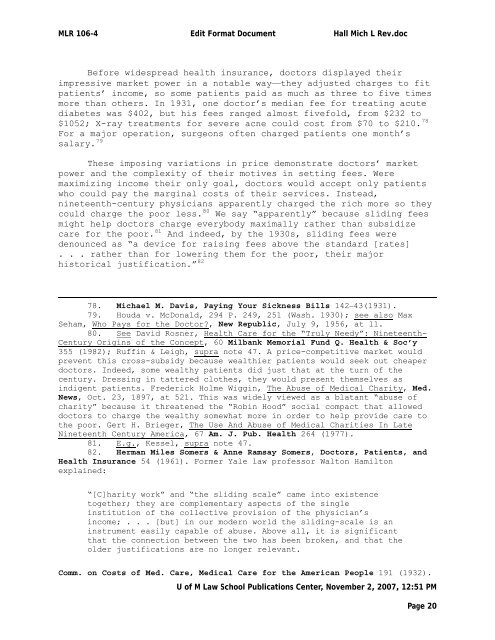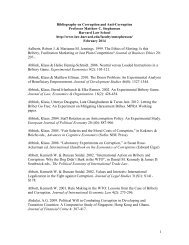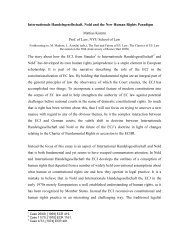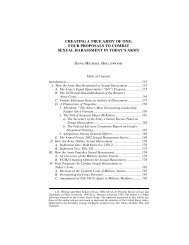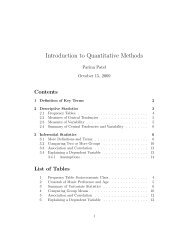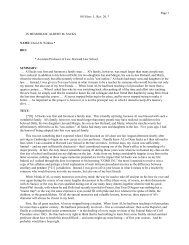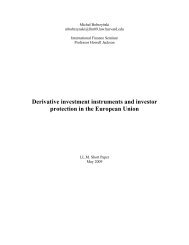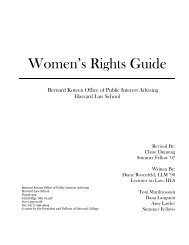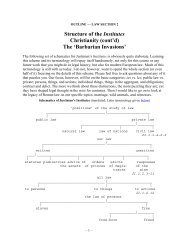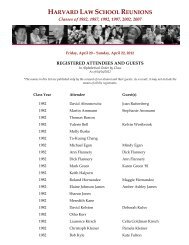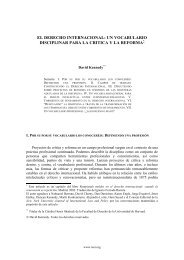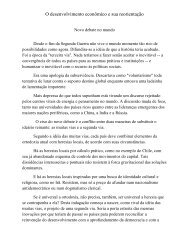Patients as Consumers - Harvard Law School
Patients as Consumers - Harvard Law School
Patients as Consumers - Harvard Law School
You also want an ePaper? Increase the reach of your titles
YUMPU automatically turns print PDFs into web optimized ePapers that Google loves.
MLR 106-4 Edit Format Document Hall Mich L Rev.doc<br />
Before widespread health insurance, doctors displayed their<br />
impressive market power in a notable way—they adjusted charges to fit<br />
patients’ income, so some patients paid <strong>as</strong> much <strong>as</strong> three to five times<br />
more than others. In 1931, one doctor’s median fee for treating acute<br />
diabetes w<strong>as</strong> $402, but his fees ranged almost fivefold, from $232 to<br />
$1052; X-ray treatments for severe acne could cost from $70 to $210. 78<br />
For a major operation, surgeons often charged patients one month’s<br />
salary. 79<br />
These imposing variations in price demonstrate doctors’ market<br />
power and the complexity of their motives in setting fees. Were<br />
maximizing income their only goal, doctors would accept only patients<br />
who could pay the marginal costs of their services. Instead,<br />
nineteenth-century physicians apparently charged the rich more so they<br />
could charge the poor less. 80 We say “apparently” because sliding fees<br />
might help doctors charge everybody maximally rather than subsidize<br />
care for the poor. 81 And indeed, by the 1930s, sliding fees were<br />
denounced <strong>as</strong> “a device for raising fees above the standard [rates]<br />
. . . rather than for lowering them for the poor, their major<br />
historical justification.” 82<br />
78. Michael M. Davis, Paying Your Sickness Bills 142–43(1931).<br />
79. Houda v. McDonald, 294 P. 249, 251 (W<strong>as</strong>h. 1930); see also Max<br />
Seham, Who Pays for the Doctor?, New Republic, July 9, 1956, at 11.<br />
80. See David Rosner, Health Care for the “Truly Needy”: Nineteenth-<br />
Century Origins of the Concept, 60 Milbank Memorial Fund Q. Health & Soc’y<br />
355 (1982); Ruffin & Leigh, supra note 47. A price-competitive market would<br />
prevent this cross-subsidy because wealthier patients would seek out cheaper<br />
doctors. Indeed, some wealthy patients did just that at the turn of the<br />
century. Dressing in tattered clothes, they would present themselves <strong>as</strong><br />
indigent patients. Frederick Holme Wiggin, The Abuse of Medical Charity, Med.<br />
News, Oct. 23, 1897, at 521. This w<strong>as</strong> widely viewed <strong>as</strong> a blatant “abuse of<br />
charity” because it threatened the “Robin Hood” social compact that allowed<br />
doctors to charge the wealthy somewhat more in order to help provide care to<br />
the poor. Gert H. Brieger, The Use And Abuse of Medical Charities In Late<br />
Nineteenth Century America, 67 Am. J. Pub. Health 264 (1977).<br />
81. E.g., Kessel, supra note 47.<br />
82. Herman Miles Somers & Anne Ramsay Somers, Doctors, <strong>Patients</strong>, and<br />
Health Insurance 54 (1961). Former Yale law professor Walton Hamilton<br />
explained:<br />
“[C]harity work” and “the sliding scale” came into existence<br />
together; they are complementary <strong>as</strong>pects of the single<br />
institution of the collective provision of the physician’s<br />
income; . . . [but] in our modern world the sliding-scale is an<br />
instrument e<strong>as</strong>ily capable of abuse. Above all, it is significant<br />
that the connection between the two h<strong>as</strong> been broken, and that the<br />
older justifications are no longer relevant.<br />
Comm. on Costs of Med. Care, Medical Care for the American People 191 (1932).<br />
U of M <strong>Law</strong> <strong>School</strong> Publications Center, November 2, 2007, 12:51 PM<br />
Page 20


